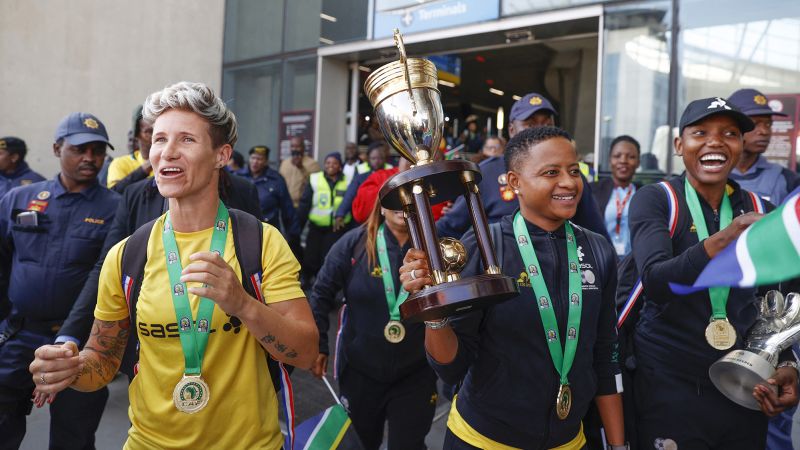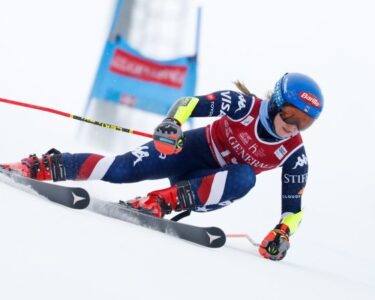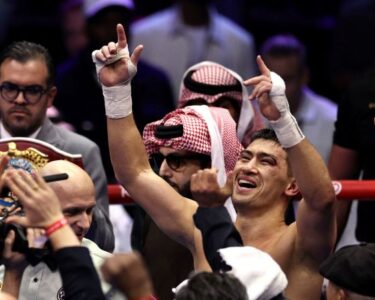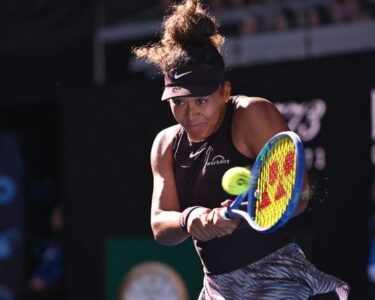CNN
—
One year ago, the South Africa women’s national soccer team was crowned queen of the continent as it defeated Morocco in front of 50,000 fans in the Women’s Africa Cup of Nations (WAFCON) final.
The team is now making its second appearance at the Women’s World Cup, but 30 years ago, the “Banyana Banyana” was playing its first ever match as a nation emerging from apartheid.
The system of racial classification and segregation beginning in the 1940s – led by the descendants of European settlers known as Afrikaners – formally oppressed the non-White population, forcing them to live and exist separately from White South Africans. The system would only come to an end in the 1990s, ushering a new era for the “Rainbow Nation.”
In 1993, far from the glitz and glamour of the World Cup, South Africa’s inaugural game was played against neighbor Swaziland (now Eswatini) at a community soccer pitch in a Johannesburg suburb in front of a sparse crowd – even the most basic facilities were seen as a luxury to the team.
“We had changing rooms, that was quite an experience,” backroom team manager Dara Carroll tells CNN Sport. “We had never had changing rooms where we played. We changed behind stands or wherever we could.”
On that day, South Africa romped to a 14-0 victory over Swaziland, marking the beginning of a journey filled with challenges and trials, but one which would end with continental glory and the ultimate prize of playing at the World Cup.
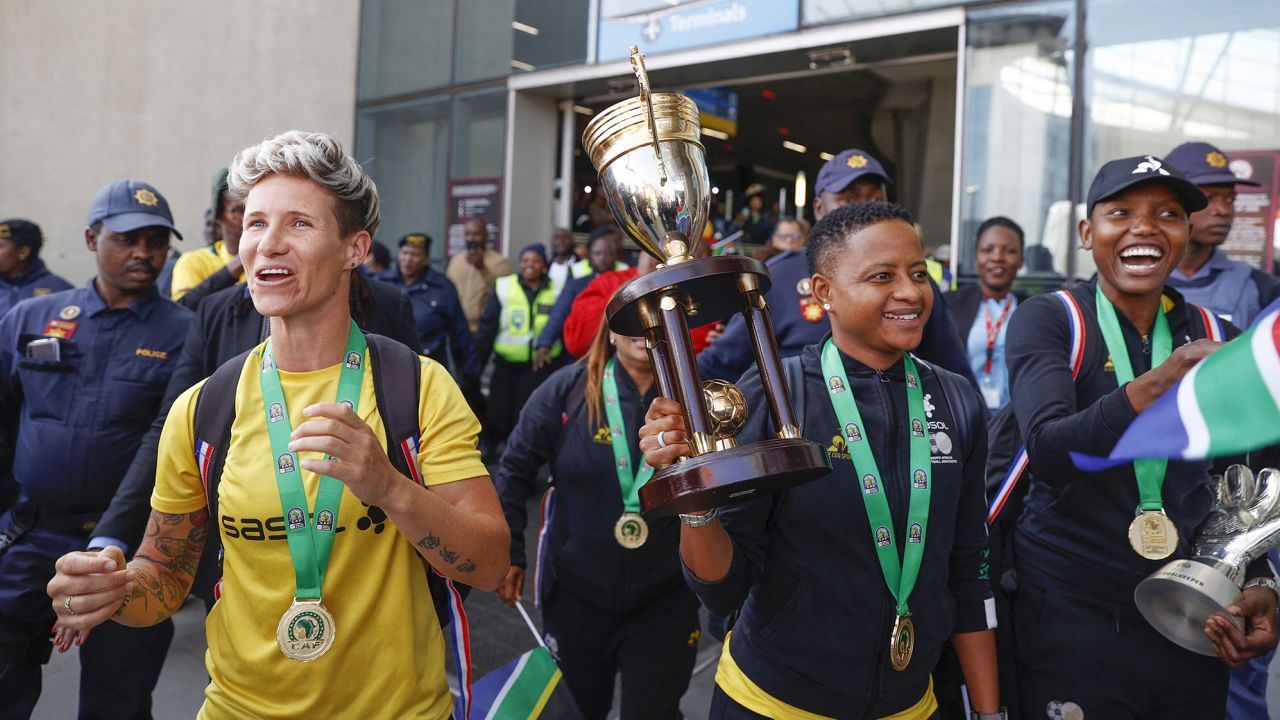
First steps for the rainbow nation
Women’s soccer in South Africa first emerged in the 1960s, played by amateurs and only up to a provincial level. Over the next few decades, the game would see some growth and eventually a national team was selected from the provinces.
One of those who played for the Springboks was Fran Hilton-Smith, a trailblazer of the women’s game who would go on to organize that first match against Swaziland.
“There was a national team selected every year,” the now retired administrator tells CNN Sport. “We played then as the South African Women Association (SAWFA) and, from the 70s and 80s, every year they selected the team.”
Because of the racial segregation in South Africa under apartheid rule, the nation’s soccer teams had been banned from the Confederation of African Football (CAF) since 1960 and from FIFA since 1961. As a result, the national team in the 80s – as a squad deemed White-only – was unable to play any official matches.
While the government’s draconian, discriminatory policies stopped White and Black men from playing against each other within the country, because of the low profile of women’s soccer, players from all backgrounds were able to play with and against each other.
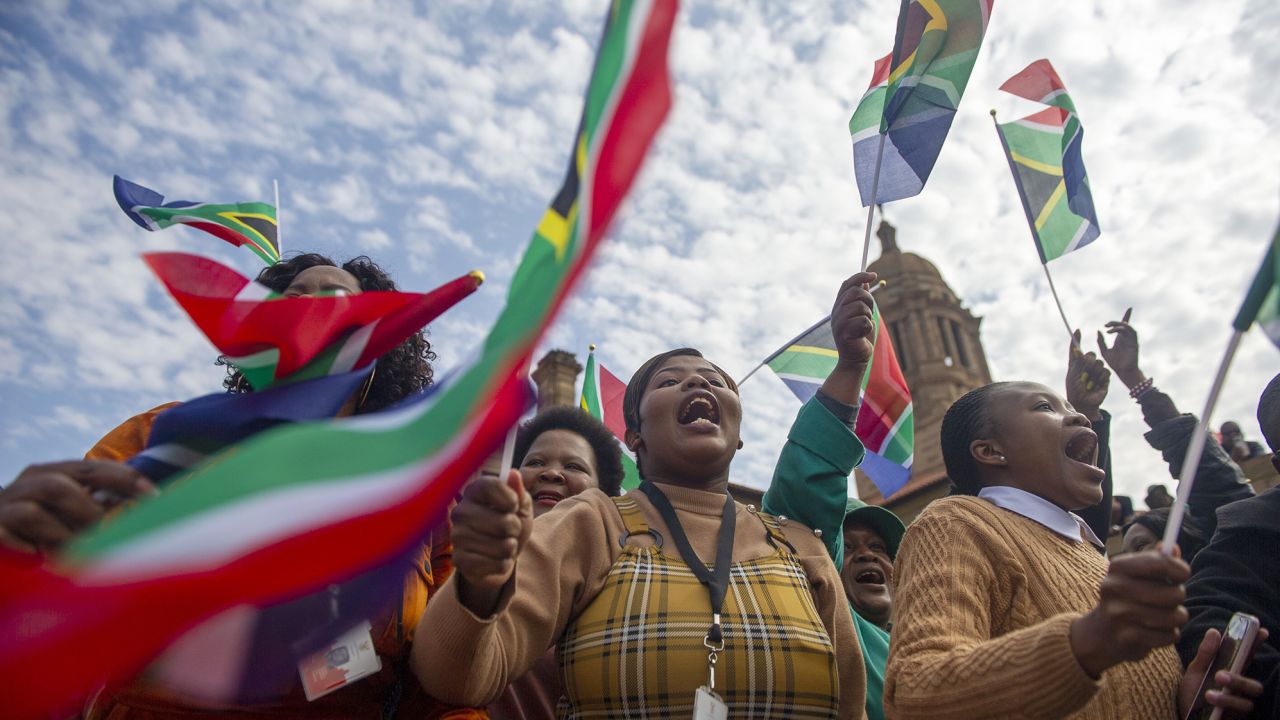
By the late 80s, the interprovincial soccer team featured players like current Banyana Banyana coach Desiree Ellis – who is from a bi-racial background, as well as the Soweto Ladies Football Club, a team based out of one of South Africa’s largest townships.
With the release of future president Nelson Mandela spelling the end of apartheid rule, South Africa was readmitted to the soccer world, and the women were ready for their time in the spotlight.
Hilton-Smith, who at this point had ended her playing career, set about organizing the new women’s national team, reaching out to the association in Swaziland to organize a friendly.
She asked former Southampton and England legend Terry Paine, who was at the time coaching at Wits University in Johannesburg, to take charge of the squad as coach.
Paine and Hilton-Smith then invited players from around the country to come and try out for the newly formed team – one of those invited was a 30-year-old Ellis.
“I was very blessed to make the squad as vice-captain and score on my debut,” the now African champion coach tells CNN Sport. Not only did she score, the midfielder nicknamed “Magic” bagged a hat-trick in the 14-0 win.
For someone who grew up unaware that girls’ soccer existed, scoring for her nation in its first game was extra special.
From apartheid to African champion
Despite the brilliant start on the pitch, things were anything but easy off it. With the federation showing minimal interest in women’s soccer and players being entirely amateur, life was tough as a soccer player, something Ellis would find out on her way home from that win against Swaziland.
“I lost my job because we had to drive up with a minibus to Johannesburg from Cape Town, and on the way back, we got a puncture and I came back to work a day late,” says a laughing Ellis.
Her employers at the meat market where she ran the spice counter would not take the excuse that she was representing her country in sport and subsequently fired her.
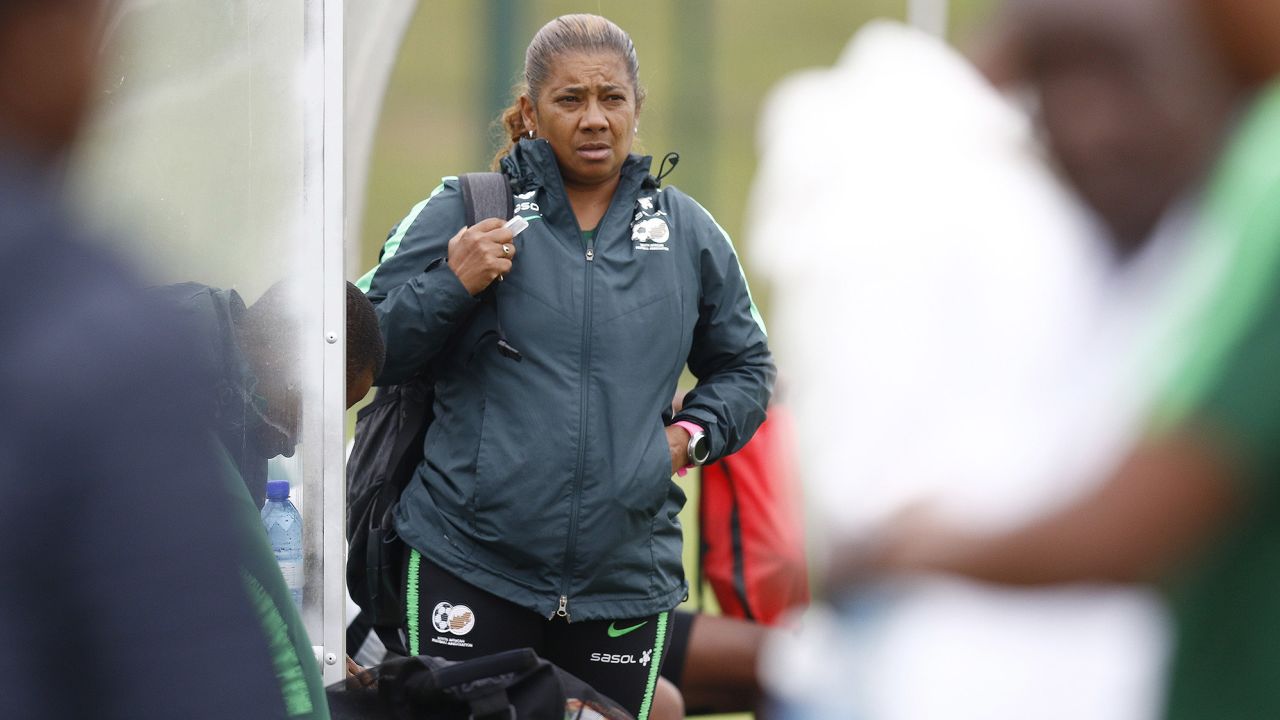
She can smile looking back on it now, but Ellis wasn’t just ignored despite her achievements for her country, she was actively punished for representing South Africa.
It would be another three years before Ellis would find work and despite nearly a decade of captaining the team, Ellis would never be paid a salary to play the game she loves.
Even playing itself would be a challenge as the basic needs of players weren’t accommodated.
“It was always a huge struggle because the football federation were not really interested in women’s football,” says Hilton-Smith, who headed up women’s soccer in the country for over two decades.
Even sourcing team jerseys was difficult, with the federation only providing the women’s team with the men’s leftovers, to the point that at some games, players donned shirts with the name of male players on their shirt.
“I washed the kit for years – actually for five years I’d bring the national team kit home, wash it, iron it and have it ready,” says Carroll, who fulfilled every job the team needed including coach, administrator, team doctor and security.
“It’s only lately, in the last eight years, that we’ve had women’s kits.”
Carroll eventually had to stop working with the team when she no longer could get enough time off her job to travel with the squad as all the work she did with the team was voluntary. And it wouldn’t be until the mid-2010s when the structure of the team began professionalizing.
But thanks to the sacrifice of people like Carroll, Ellis, Hilton-Smith and countless others, the national side has climbed previously unimaginable heights.
Progress still needed
In 2018, with former captain Ellis now coaching, Banyana Banyana reached the final of WAFCON, only losing to serial winner Nigeria on penalties. That appearance in the final also qualified the team for its first ever World Cup appearance in 2019 in France.
Three years later, the team would return to the continental stage and earn revenge on Nigeria on the way to a first ever WAFCON title in Morocco. Ellis was finally able to achieve as a coach what eluded her as a player.
However, Ellis holds no grudges towards the players who now enjoy professional contracts and a structure that she could have only dreamed of as a player.
“We always say to the players that, you know, the generations that have come before created opportunities. And the next generation will create opportunities for the next generation,” she tells CNN.
Despite once again reaching the sport’s greatest competition, things are still not perfect in South Africa for the women’s team and those opportunities are still being fought for.
The team boycotted its pre-World Cup friendly against Botswana over complaints about the venue used and payment of bonuses to the team.
“I made the call for SAFA and SAFPU to come together to urgently address the concerns raised by Banyana Banyana who inspire the country so much,” said South Africa’s Minister of Sports, Arts and Culture Zizi Kodwa.
“I am happy that they came together. The Motsepe Foundation was also approached and I am thrilled by the contribution that they made. Banyana Banyana can now focus fully on the FIFA Women’s World Cup, knowing that their immediate concerns have been addressed.”
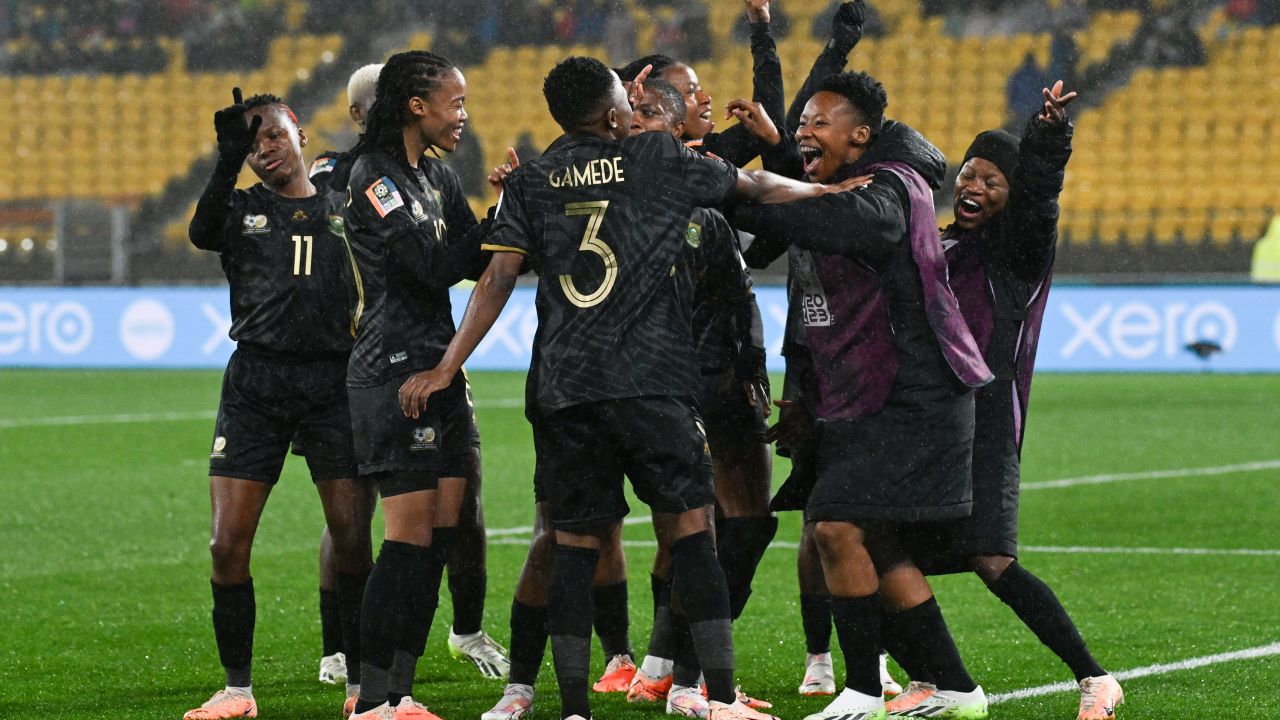
Some of the team’s members are not yet fully professional and, despite a national league launching in 2019 off the back of South Africa’s first appearance at the World Cup, only two clubs in the league are fully professional with the rest ranging from semi-professional to amateur.
That struggle highlights of how far soccer has yet to go in the nation and is a reminder that proper treatment of the women’s game rarely comes without the players fighting for it themselves.
But even having the power to boycott a game and force the federation to give into the players’ demands is itself a sign of how much progress has been made.
With the chance to shine on the biggest stage of all, the players could push the envelope even more in their fight to develop the game to its full potential.
The team’s opening game at this year’s World Cup demonstrated all the passion and excitement the team has promised in recent years.
The players arrived at the Wellington Regional Stadium, New Zealand, in style – dancing and singing their way from the team bus to the dressing rooms – before facing world No. 3 Sweden.
After a gritty performance, South Africa was denied a draw after Sweden scored a winner in the last minute of regular time to make it 2-1.
Despite the defeat, South Africa demonstrated its potential to qualify through the group stages into the knockout rounds of the competition.


